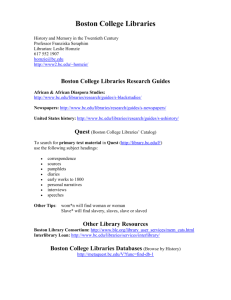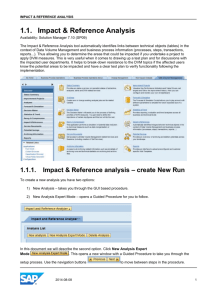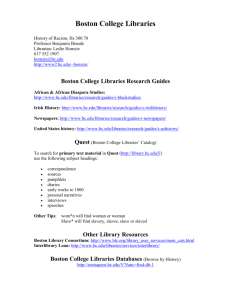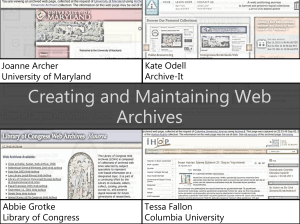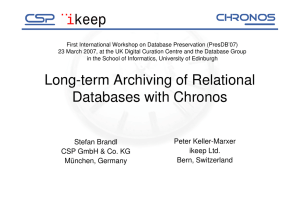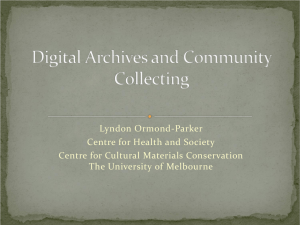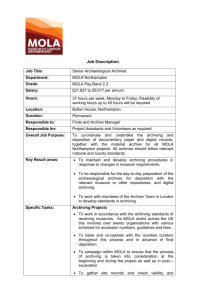PPTX
advertisement
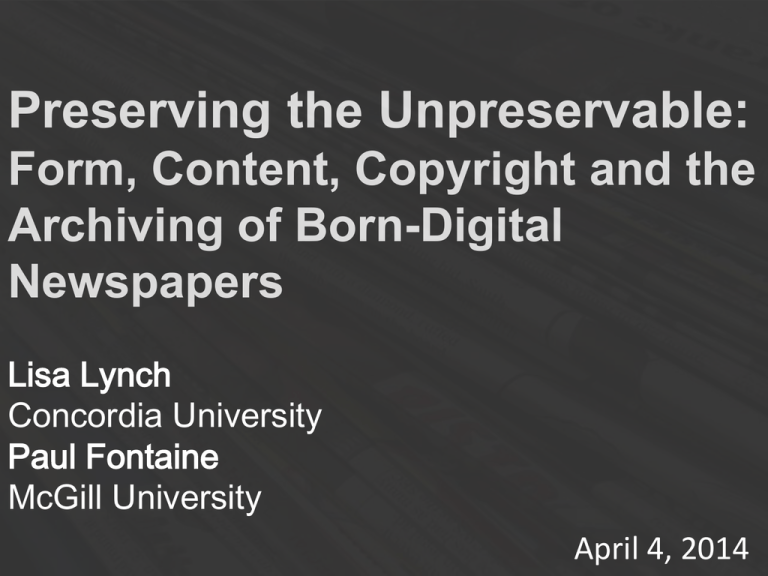
Preserving the Unpreservable: Form, Content, Copyright and the Archiving of Born-Digital Newspapers Lisa Lynch Concordia University Paul Fontaine McGill University April 4, 2014 Born-digital archiving 1. We describe the prevailing practices in borndigital newspaper archiving 2. Turn to Canada as a case study to illustrate the current impasse The British Library has preserved over 65 million news articles from archives dating back 300 years The Library of Congress has collected newspapers from each state for its Chronicling America project The Swedish Royal Libraries’ KulturaRW3 program, has been collecting news websites since 1996 Contemporary archiving challenges: 1. Copyright concerns 2. Technical hurdles 3. A lack of consensus Public vs. private interests • Issues around copyright have been made more urgent by the fact that newspapers see their own archives as a marketable good • The copyright interest of newspapers has meant, overwhelmingly, the archiving of historical newspapers ends sometime in the first part of the twentieth century Technological hurdles • PDF archiving: the collecting and processing of PDFs instead of digitizing or microforming printed newspapers Challenge: requires a relationship between archivists and news outlets • Web harvesting: software captures and archives a site’s web pages Challenge: news sites behind paywalls generally are not harvested Whose task is it? • The Centre for Research Libraries argues that libraries should work directly with for-profit archiving companies and newspapers • As both government and foundation money has become more scarce, archiving projects have relied on public-private partnerships in order to secure funding Why Can’t We Be Friends? • Library archivists may be loath to give control over to those with commercial interests • The financial situation of many newspapers might discourage them from involvement in a project that has potential costs The Canadian Context • Library and Archives Canada has long considered the archiving of newspapers to be a provincial rather than federal responsibility • In 2013, a deal was announced between LAC and Canadiana to digitize 40 million texts images from LAC’s archives • This deal emphasized that LAC’s own role in future digitization projects would be minimal What to archive? • Globe and Mail is still in the process of prioritizing what material will be transferred. A portion of their content remains in a dark archive accessible only to employees • Sun Media, like The Globe, either lost or decided to leave behind content during their most recent migration Limitations • Weak national library system, • Economically ailing news industry that is framed as a commercial enterprise rather than a public good • Legal framework that has produced an unclear climate around copyright • Archival community that has largely been unwilling to challenge copyright laws Conclusions • The failure to archive born-digital news represents an abdication of responsibility towards an important part of the world’s cultural heritage • However, as Canada is an active partner in the Center for Research Libraries, it may be that momentum on the U.S. end can convince Canadian news publishers to partner with libraries and aggregators

